All About Fish Sticks
Commercial fish sticks are a popular convenience food made from fish, usually white fish like pollock, cod, or haddock. The fish is ground and shaped into uniform sticks, then coated in breading or batter and pre-fried before being frozen. Have you ever checked the ingredient list? It’s full of unpronounceable ingredients. Often, the first ingredient is minced fish. Some great brands do offer better options, though (listed at the end of the post).
The quality of the fish in mass-produced versions can vary. Many are made with minced fish that includes not just fillets but also trimmings or lesser cuts. This can affect texture and flavor. Additives like preservatives, artificial flavors, and extra sodium are common in commercial fish sticks to boost flavor and shelf life.
Making your own gives you control over quality and flavor. You can use fresh or frozen fish fillets to ensure you’re using high-quality cuts. Homemade fish sticks also let you experiment with healthier breading options and seasonings. Baking instead of frying can lower fat content. This DIY method provides a nutritious, kid-friendly meal with the confidence of knowing exactly what’s in it.
History of Fish Sticks
Fish sticks have an interesting history. They began in the 1950s, when food processing and freezing techniques were advancing. People wanted more convenient and affordable seafood options, and food shortages in post-WWII Britain made fish sticks essential.
Birds Eye, a British company, was one of the first to experiment with frozen fish sticks. They introduced them to the U.S. market in 1953. In the UK, they were called “fish fingers,” and quickly gained popularity.
These early fish sticks aimed to preserve fish without losing flavor or texture. They used inexpensive, abundant fish like cod, which they ground, breaded, and froze. This made fish sticks a convenient, long-lasting option for busy families.
Today, fish sticks remain a household staple. However, many people now make their own for a fresher, healthier alternative to the commercial variety.
Benefits
One of the biggest benefits of fish sticks is their versatility. They can be cooked in many ways, such as deep frying, baking, or grilling. They also pair well with dipping sauces, making them a fun option for those who enjoy experimenting with flavors. Whether as a main dish or a snack, fish sticks are a convenient and tasty food loved by people of all ages.
Concerns about the sustainability of the fishing industry have grown recently. Many consumers now seek fish sticks made from responsibly sourced fish produced using environmentally friendly methods. Companies like Gorton’s have responded by offering products made with sustainably sourced fish and eco-friendly packaging.
How Healthy Are Fish Sticks?
Fish sticks can fit into a healthy diet, but you need to consider their nutritional content. Fish is a good source of protein, omega-3 fatty acids, and essential vitamins and minerals.
However, many commercially produced fish sticks are high in calories, sodium, and unhealthy fats like trans fats, as they are often breaded and deep-fried.
Fish is generally healthy, especially for growing children. But it’s important to pay attention to the type of fish and how it’s prepared. Baked or grilled fish sticks made with responsibly sourced fish and paired with vegetables make a nutritious meal.
Portion sizes also matter. Both children and adults should eat a balanced diet with a variety of foods from all food groups, rather than relying on one food item for all their nutrition.
What Is the Most Common Fish Used in Fish Sticks?
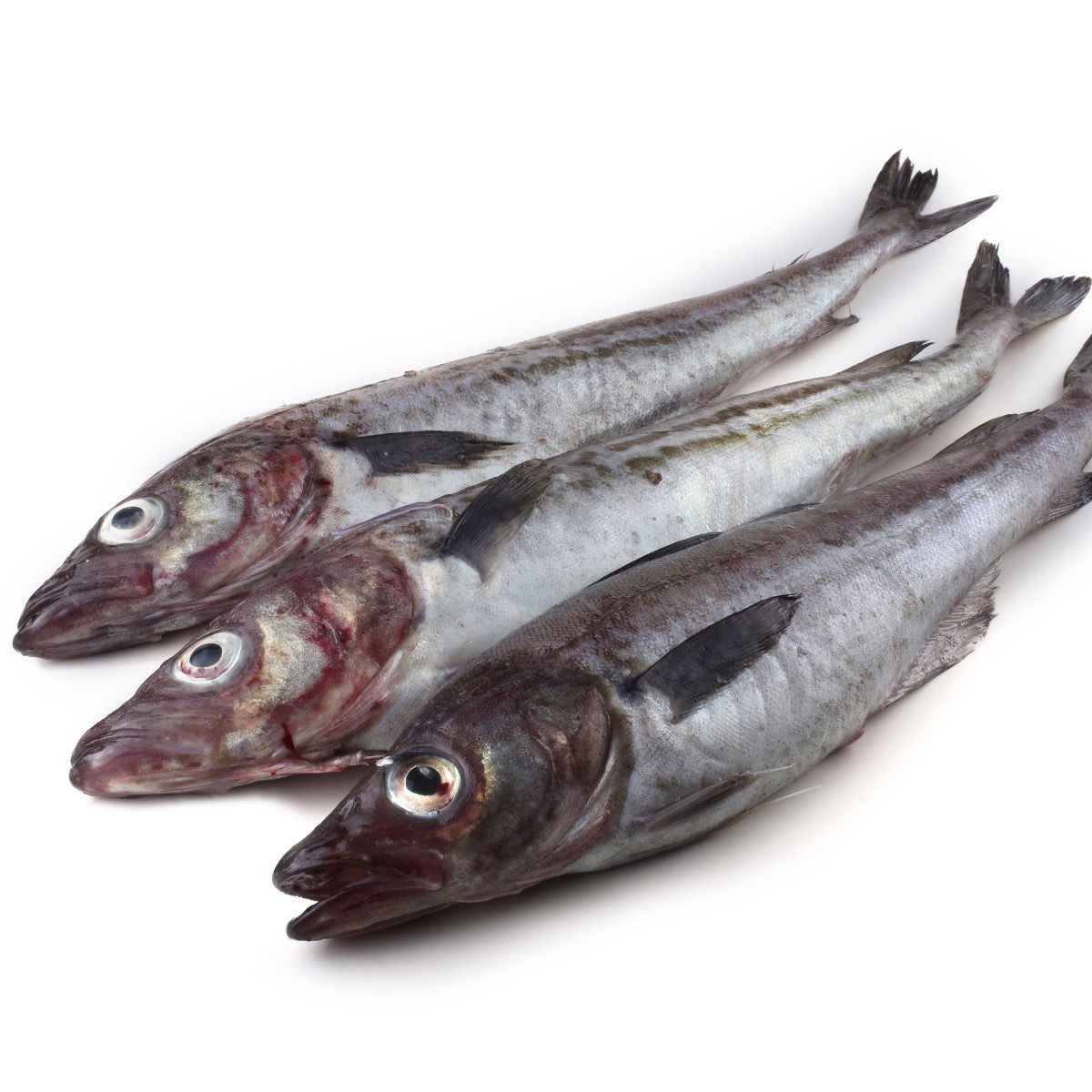
The most common fish used in fish sticks is pollock. Pollock is a mild-flavored white fish that’s readily available, making it a popular choice.
Other fish like cod, haddock, and other white fish may also be used. The choice of fish depends on the manufacturer and the target market.
For example, some brands use premium fish like cod for higher-end products, while others choose pollock for budget-friendly options. No matter the fish, it’s important to select fish sticks made from responsibly sourced fish to ensure they are both sustainable and healthy.
What Are They Coated With?
Fish sticks are usually coated with breadcrumbs and seasonings. This breading creates a crispy exterior and adds flavor.
The breading mixture can vary, but it typically includes breadcrumbs, flour, spices, and seasonings. Some fish sticks are also coated with batter before being breaded for an even crispier texture.
The batter often includes eggs, milk, and flour. The ingredients and preparation methods affect the flavor and texture. For the best taste and nutrition, choose a high-quality product.
Ways to Cook
- Deep frying: This method creates a crispy exterior. Heat oil in a deep fryer or saucepan to 375°F. Cook the fish sticks for 3-5 minutes, or until golden brown.
- Baking: A healthier alternative to deep frying, baking doesn’t require added oil. Place the fish sticks on a lightly oiled baking sheet. Bake at 425°F for 10-15 minutes, until crispy and golden brown.
- Grilling: Grilling adds a smoky flavor. Brush the fish sticks with oil and grill over medium-high heat for 4-5 minutes per side, or until crispy and cooked through.
- Broiling: Broiling cooks fish sticks quickly while giving them a crispy exterior. Place them on a baking sheet and broil for 4-5 minutes per side until golden brown.
Regardless of the method, cook fish sticks until golden brown to ensure they are safe to eat and have the best flavor.
Should You Defrost Commercial Fish Sticks Before Cooking?
Yes, defrost them before cooking. Cooking them from frozen can result in uneven cooking, with the outside overcooked while the inside remains undercooked. This can lead to dry, tough fish sticks.
To defrost, place the fish sticks in the refrigerator for a few hours or overnight, or use the defrost setting on your microwave. After defrosting, pat them dry with paper towels to remove excess moisture. This helps them cook evenly and become crispy.
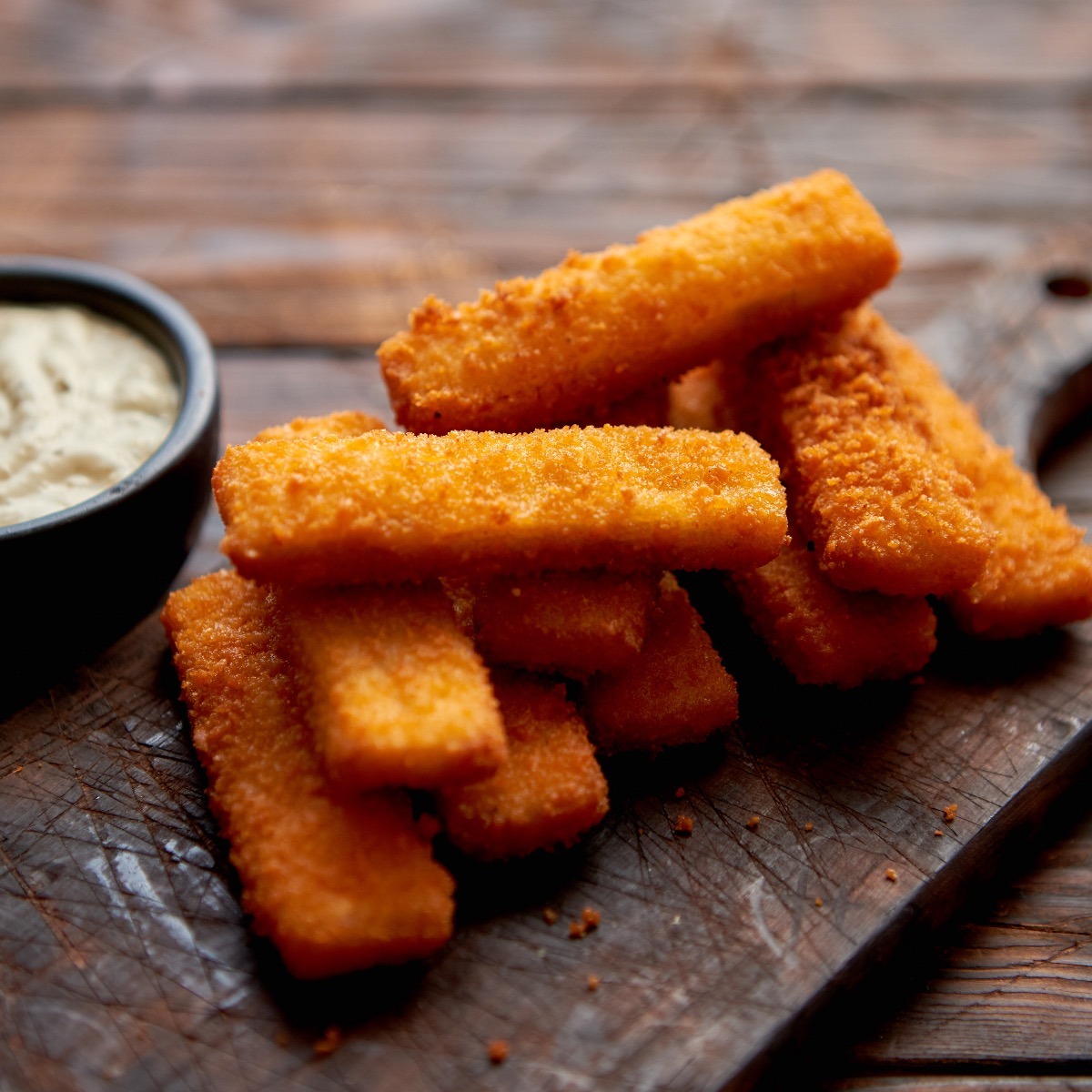
Is There Mercury in Them?
Some types of fish contain mercury, a toxic heavy metal. The mercury levels in fish depend on factors such as the fish type, size, and where it was caught.
Generally, larger, predatory fish like tuna, swordfish, and shark have higher mercury levels. Smaller, non-predatory fish, like pollock, have lower mercury levels. Since pollock is commonly used in fish sticks, the mercury content will depend on the fish’s source and the processing method.
Choose fish sticks made from lower-mercury fish like pollock to reduce mercury exposure. Limit high-mercury fish, especially if you are pregnant, breastfeeding, or have young children. Also, opt for fish sticks made from sustainably sourced fish to help protect the environment and ensure the fish is safe and healthy to eat.
Best Condiment To Serve With?
The best condiment for fish sticks depends on your taste. Some popular options include:
- Tartar sauce: This tangy, creamy sauce made of mayonnaise, pickles, lemon juice, and seasonings is a classic choice.
- Ketchup: A sweet and slightly tangy favorite, it’s a simple and classic option.
- Mustard: Tangy and spicy, mustard pairs well with fish sticks and is great with honey mustard sauce.
- Sweet chili sauce: This sweet, slightly spicy sauce adds a kick and is perfect for those who like heat.
- Remoulade: A mayonnaise-based sauce with a tangy, spicy flavor, often used as a dipping sauce for seafood.
Ultimately, the best condiment for fish sticks is up to you. Experiment with different sauces to find your favorite.
2022 Commercial Fish Sticks Rankings
I looked at several online culinary sites that rank food ingredients, and here’s what I found:
America’s Home Kitchen 2022 Rankings
Gorton’s Crunchy Breaded Fish Sticks
Gorton’s Original Crunchy Breaded Fish Sticks
Van de Kamp’s Fish Sticks
The Mercury News
Trader Joe’s Lightly Breaded Fish Sticks
365 Whole Foods Breaded Fish Sticks
Sporked
365 Breaded Fish Sticks
Fremont Wild Caught Breaded Fish Sticks
Ian’s Natural Foods Fish Sticks
Advantages of Making Your Own
Making your own has several advantages, especially when it comes to quality, health, and customization:
- Quality Control: When you make them at home, you can choose high-quality, fresh fish fillets, ensuring a fresher taste and firmer texture. Unlike some commercial brands that use minced fish or trimmings, homemade fish sticks can be made with solid fillets of white fish like cod, haddock, or tilapia.
- Healthier Ingredients: Homemade lets you avoid additives, preservatives, and excess sodium often found in commercial products. You can choose a lighter breading or even bake instead of fry them, which reduces fat content without sacrificing flavor.
- Customization: Homemade fish sticks offer endless flavor possibilities. You can season them to your preference, incorporating spices, herbs, or even a hint of citrus zest. For added crunch, you can also select healthier breading options, such as whole-grain breadcrumbs or panko.
- Allergen-Friendly: Homemade can be adapted for people with dietary restrictions. Gluten-free breadcrumbs or nut-based coatings make them accessible for various diets.
- Family Involvement: Making fish sticks from scratch can be a fun, family-friendly cooking activity, giving kids a chance to learn basic kitchen skills and develop an appreciation for fresh, homemade food.
Homemade fish sticks allow for a healthier, tastier, and more personalized meal, with the added satisfaction of knowing exactly what’s on your plate.
Fish Sticks – Kid Friendly Version
Ingredients
- 1 pound white fish fillets such as pollock - haddock - flounder or tilapia
- ½ lemon juice from
- 1 cup flour
- salt and pepper to taste
- 2 egg whites lightly beaten
- 1½ cups bread crumbs fine or panko
- 1 teaspoon Old Bay Seasoning or your favorite spice blend
- olive oil for frying - optional
Instructions
- Cut the fillets into sticks of as equal a size as you can get, approximately 3 inchs x ½ inch
- Sprinkle the fish with lemon juice. Set aside.
- Stir salt and pepper, to taste, into the flour and put in a shallow dish.
- Place the egg whites in a shallow dish.
- Whisk your preferred seasoning blend into the bread crumbs, and put in a shallow dish.
- Spray a cooling rack with pan spray and set over a cookie sheet or jelly roll pan.
- Dredge each fish stick in lightly in the seasoned flour, knocking off the excess.
- Dip in the egg white. Let drain a few seconds.
- Dredge in the seasoned bread crumbs. Set each stick on the rack.
- At this point, you can either bake these or pan fry.
To Bake
- Preheat the oven to 450°F.
- Let the fish sticks set up for about ten minutes on the rack. This will help to keep the breading from flaking off.
- Bake on the cooling rack/jelly roll pan set up until the fish is cooked and the breading is nice and golden brown, about ten minutes.
To Pan Fry
- Heat a heavy-bottomed skillet over medium-high heat until hot.
- Add olive oil to a depth of about 1¼ inch.
- When the oil is hot, fry the sticks, making sure not to crowd the pan. Turn as each side cooks and turns golden brown. Total cooking time will be about five minutes.
- Remove to paper towels to drain.
Kid-Friendly Sauces
- ketchup
- honey mustard (simply whisk together honey and mustard, to taste)
- the kids' favorite barbecue sauce
- ranch dressing or other salad dressing
- tartar sauce
- raita or tzatziki sauce
- marinara sauce
Adult-Friendly Sauces
- Hollandaise sauce seasoned with parsley and dill
- Cocktail sauce with horseradish
- Soy sauce and Sriracha
- a mixture of mirin, dark soy sauce, minced fresh ginger and a pinch of sugar
- curry sauce
- sauce puttanesca

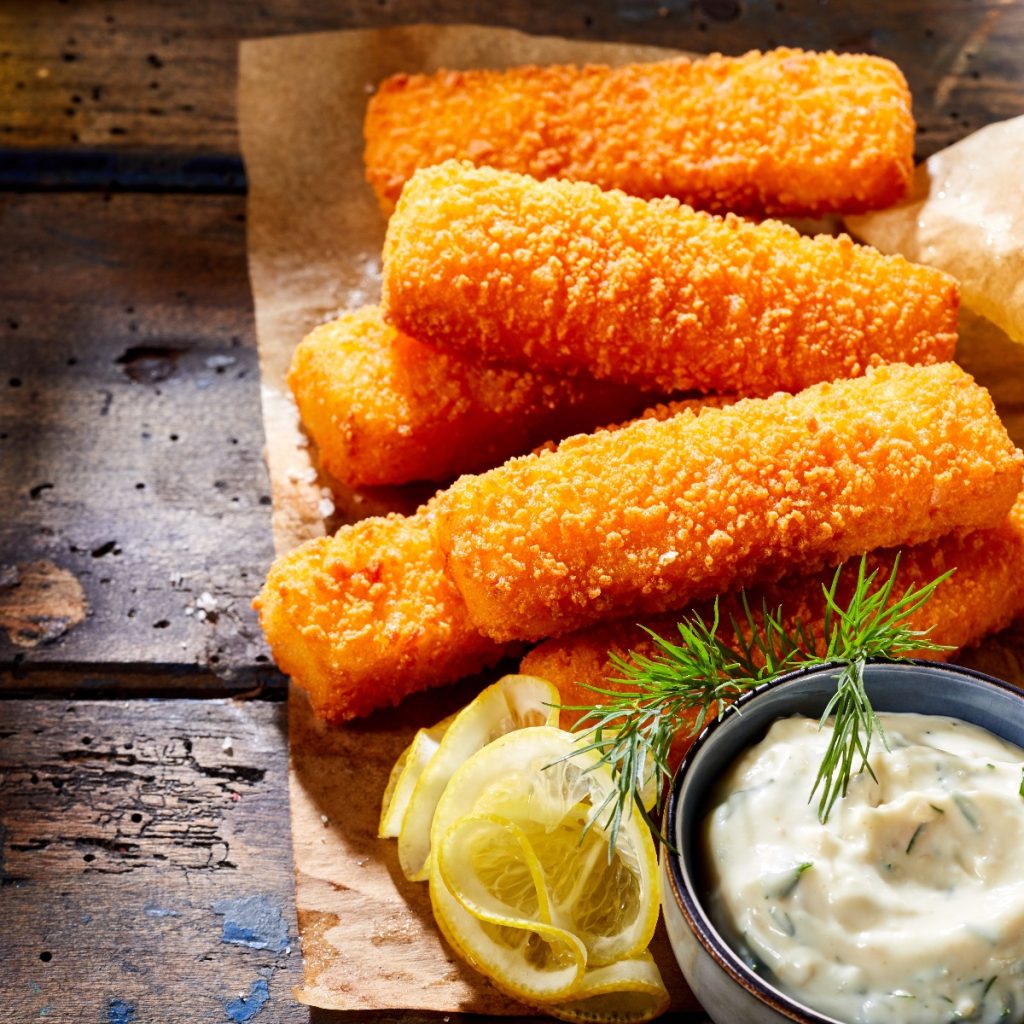
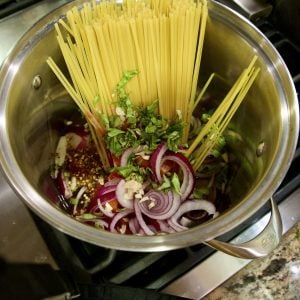



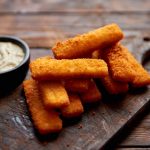
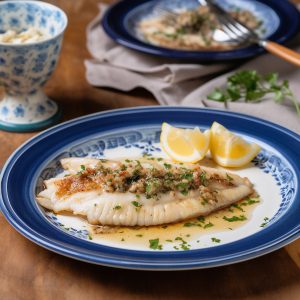

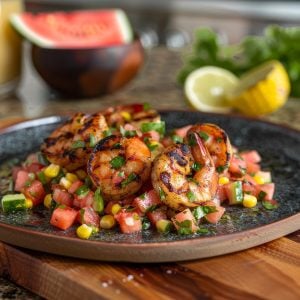
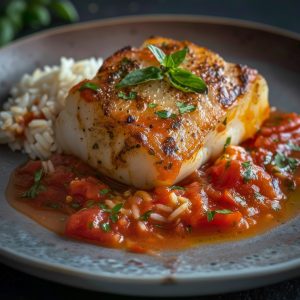
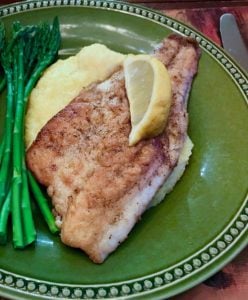
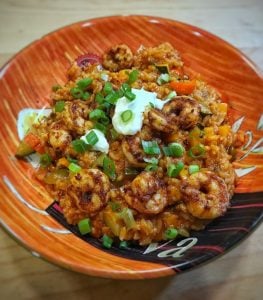
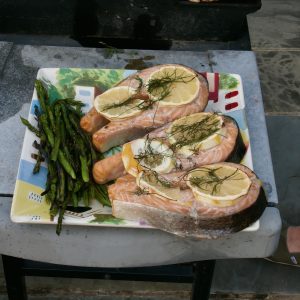
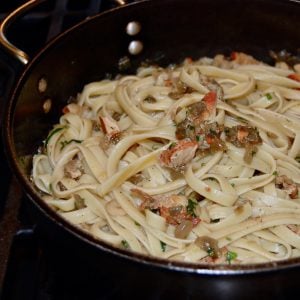


One Response
This is a terrific recipe! Thank you for sharing it. I made it last night with MahiMahi and baked the fish. Everything turned out beautifully, but because oven temperatures vary, I did have to bake my fish sticks longer than 10 minutes. Still, I will make these again.
Hi Ruthie, thanks for letting me know and you bring up an excellent point that recipe times cannot always be correct because oven temperatures are not all the same. It’s important to learn how to tell when something is cooked properly by more than time in the oven. Using a thermometer, touching, experience….these are alternatives that will make you a better cooks. Using posted cooking times should just be a guide, not the final determination. – RG